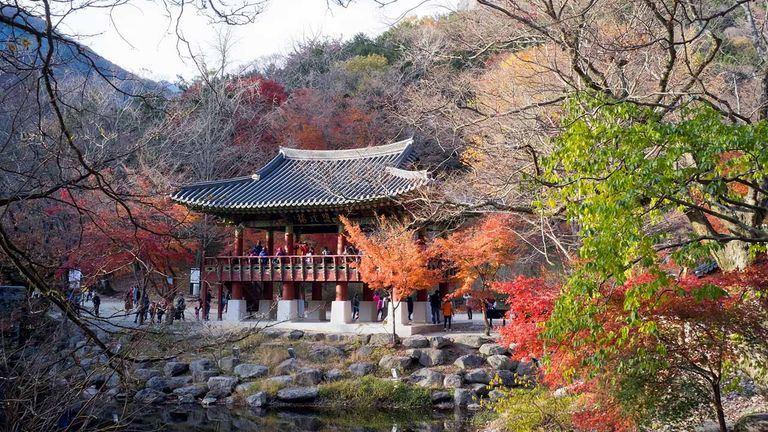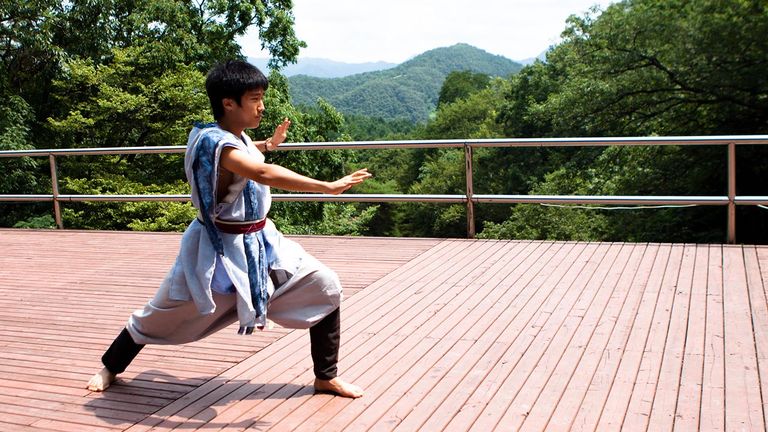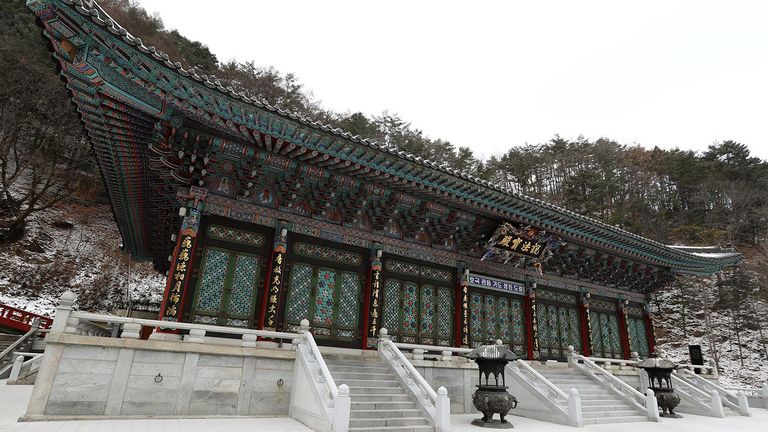Buddhism in Korea dates to the fourth century, so it’s no surprise that the religion has become a deeply rooted part of modern Korean culture. And with more than 900 traditional Buddhist temples, the country has no shortage of spiritual pilgrimage spots.
Since 2002, the Templestay program — founded by the Jogye Order of Korean Buddhism, the prevailing school of Buddhism in Korea — has allowed visitors to experience monastic life firsthand across 30 different temples.
Following are a few essential items to keep in mind: The typical duration of a temple stay is two days, but some extended periods are available. Throughout these trips, participants should keep noise to a minimum; avoid bright or revealing clothing; refrain from smoking and consuming alcohol; and treat all structures and objects with respect.
Accommodations are simple, and uniforms are provided; however, guests should also bring basic layers of clothing and toiletries for communal showers. In terms of activities, visitors will learn and practice meditation, the self-purification process of the 108 prostrations, tea ceremonies and Buddhist chanting.
Additional activities and attractions vary by temple, so here’s a breakdown of just some of the unique temple stays that dot the country.
Baekyangsa
Made famous by an episode of the Netflix documentary series “Chef’s Table,” Baekyangsa is the temple in the town of Bukha-myeon where chef Jeong Kwan creates simple yet exquisite temple food. In addition to practicing meditation and participating in tea ceremonies, visitors to Baekyangsa will learn from Kwan about the spiritual side of food.
 Baekyangsa is the idyllic temple featured in an episode of “Chef’s Table.”
Baekyangsa is the idyllic temple featured in an episode of “Chef’s Table.”
Credit: 2019 Creative Commons user hkcciFor example, barugongyang is a formal monastic meal meaning “offering” and accompanies daily chants. Made up of single servings of rice, soup and side dishes, barugongyang is also a practice of only taking what one needs. These principles of shunning excess and embracing simplicity are some of the tenets that a Baekyangsa visitor will practice during a two-day temple stay.
Golgulsa
On the outskirts of Gyeongju — the capital city of the ancient Silla Dynasty — Golgulsa Temple is home to the oldest cave temple in the country and a sixth-century carving in Mount Hamwol. Another main draw of a temple stay here is the opportunity to learn sunmudo, a traditional Buddhist Korean martial art. This practice is a yoga-like meditative fighting art that focuses on unifying body and mind through controlling one’s breath. Temple stays in Golgulsa range from crash-course one-day programs to immersive 10-day programs.
 Participants at Golgulsa’s temple stay can learn the martial art of sunmudo
Participants at Golgulsa’s temple stay can learn the martial art of sunmudo
Credit: 2019 Creative Commons user jirka_matousekGuinsa
In the heart of Sobaeksan National Park, this temple — whose name translates to “protect benevolence” — is an oasis for natural beauty. Guinsa’s 30-plus magnificent buildings are nestled in steep terrain that integrates the temple with the surrounding landscape of thick forestry and soaring mountains. Clients opting for this remote temple stay experience can choose from day trips or two-day programs.
 Guinsa’s beautiful natural surroundings make this the perfect place to unplug and unwind.
Guinsa’s beautiful natural surroundings make this the perfect place to unplug and unwind.
Credit: 2019 Creative Commons user koreanetInternational Seon Center
“Seon” translates from Korean to “zen,” the form of Taoist-influenced Buddhism. A modern facility, this meditation center is located in Seoul, and locals and tourists alike go there to learn how to meditate as well as escape the bustle of the nearby metropolis. Free classes in English on meditation and Buddhist teachings are available every Saturday evening, and the International Seon Center's temple stays are single-night programs available throughout the year.
Jikjisa
Founded during the reign of king Nulji of Silla 1,600 years ago, Jikjisa uniquely houses a plethora of Buddhist art in an on-site museum, Jikji Museum of Buddhist Arts. The name “jikji” roughly means “pointing directly to the mind,” and like most temple stays, Jikjisa emphasizes spiritual and mental rejuvenation.
Located in Gimcheon, the temple is halfway between Seoul and Busan, accessible by the Seoul-Busan train line. Temple stay programs here range from two to five days, depending on clients’ particular interests.